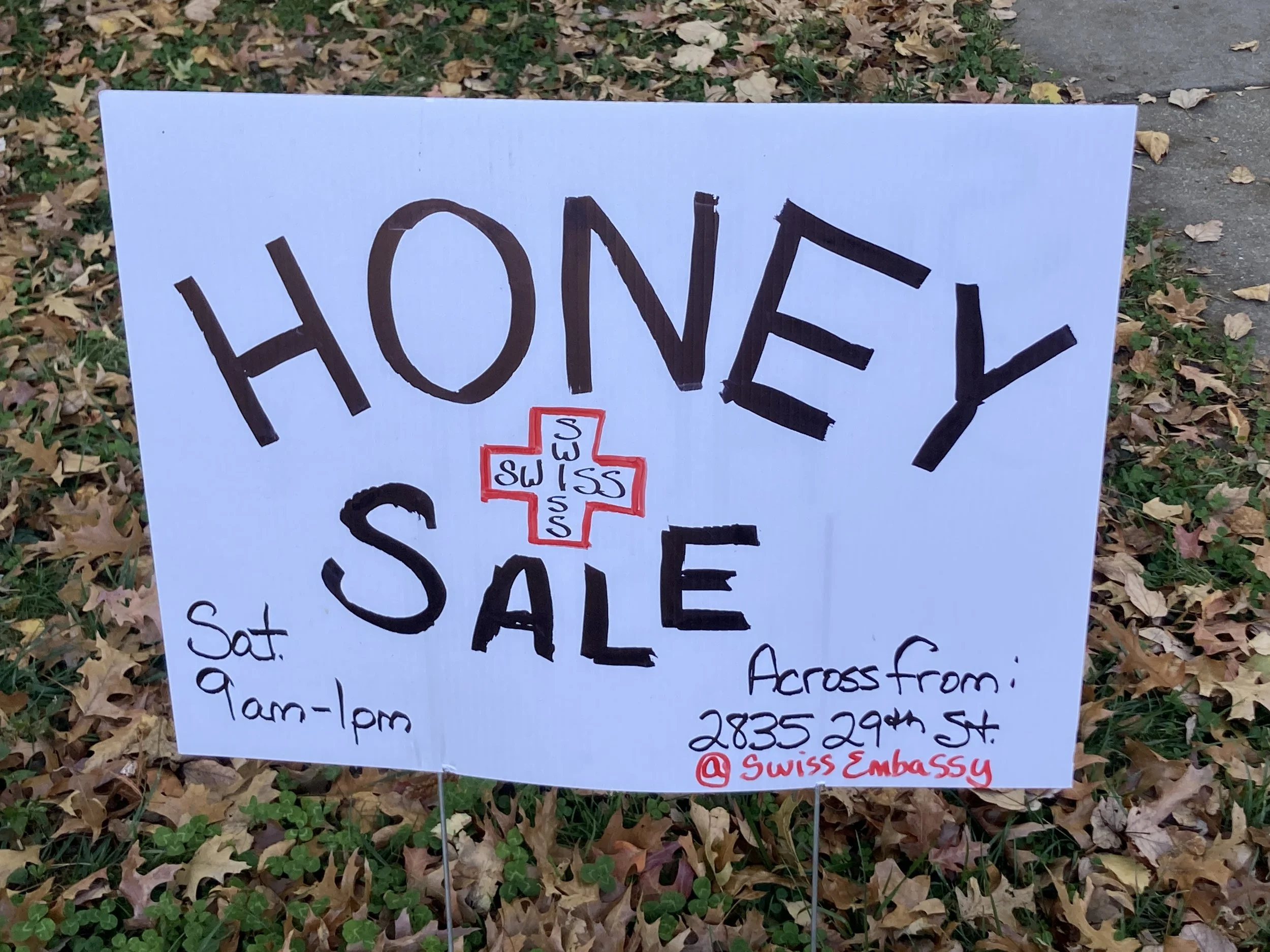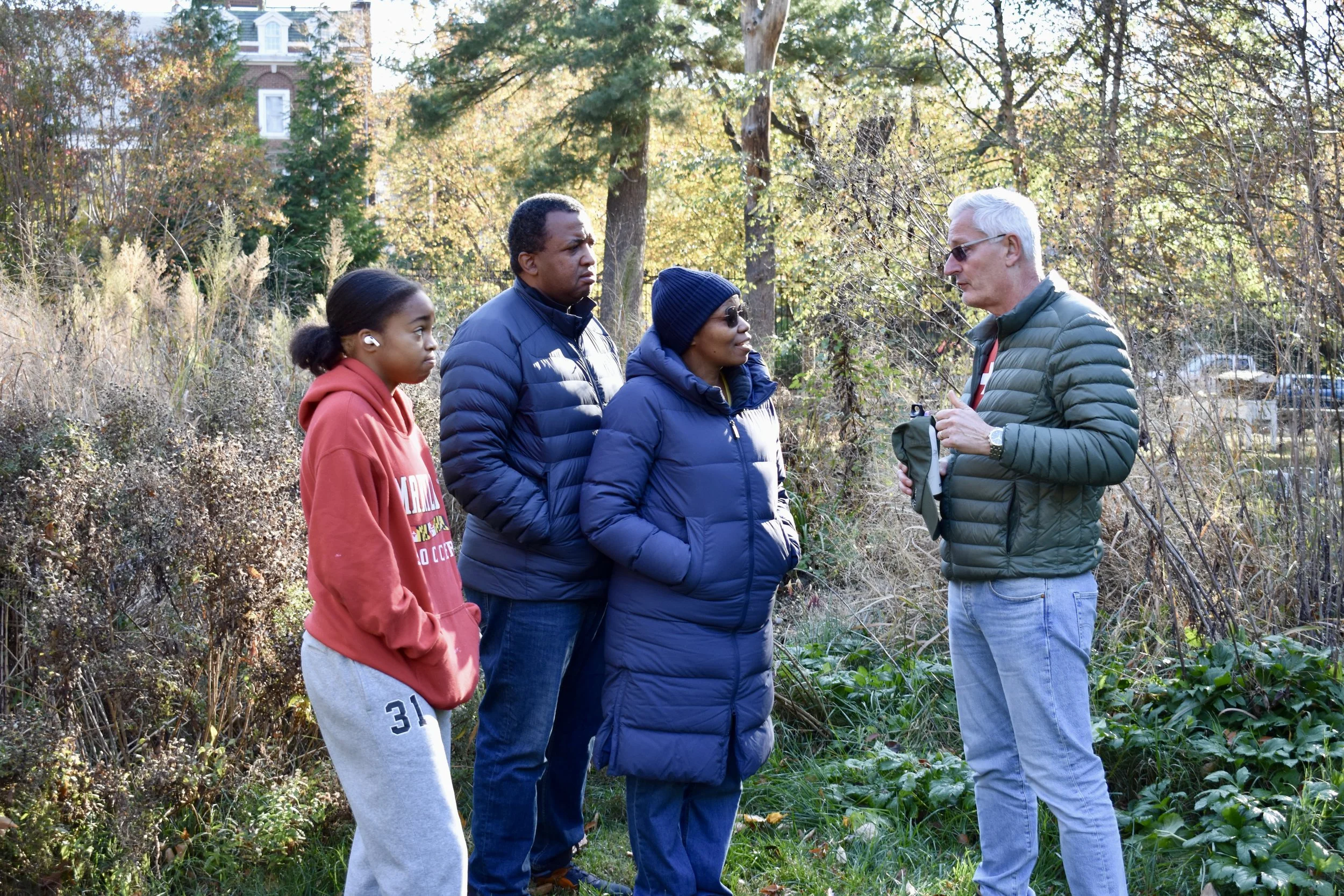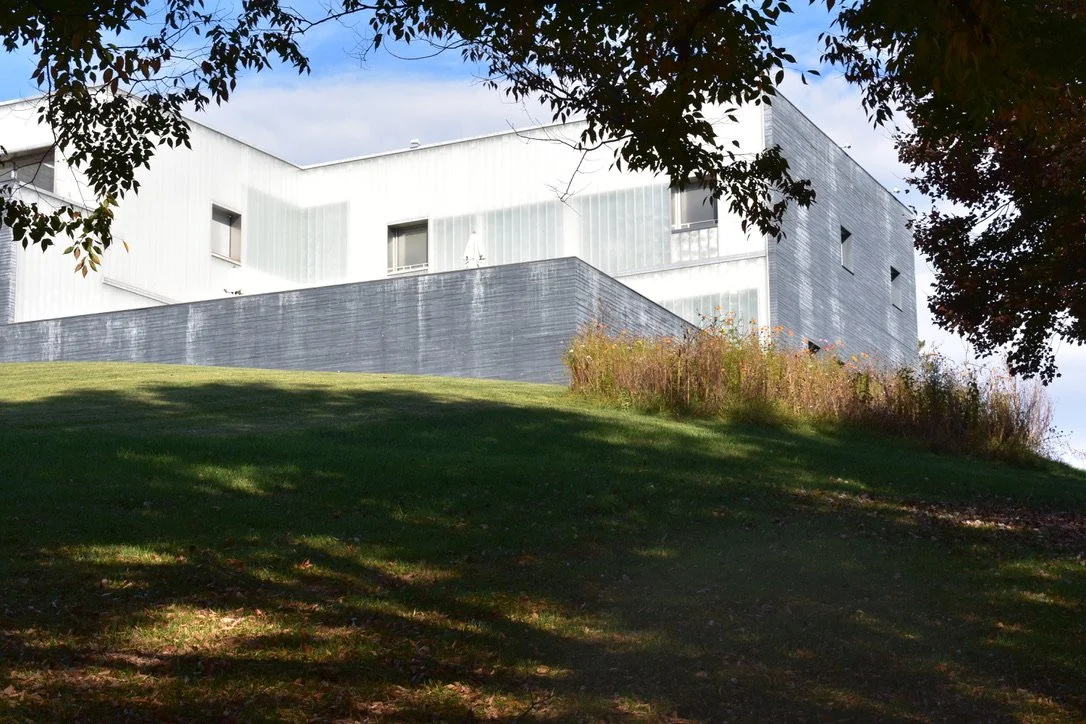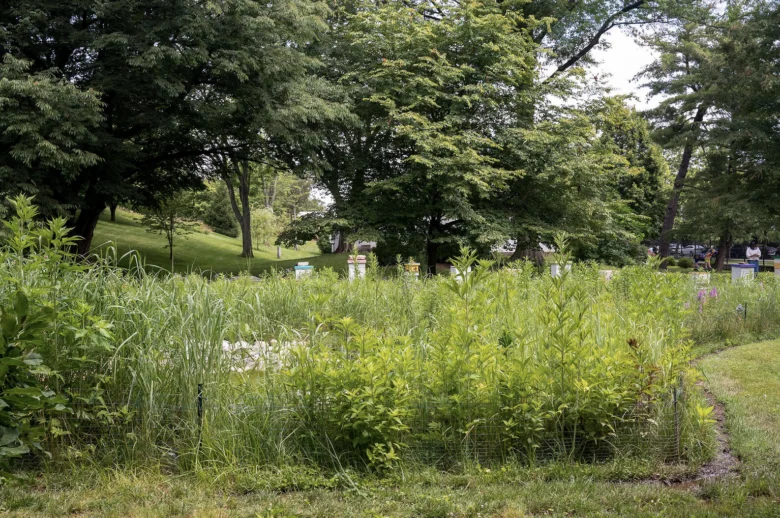The signs around upper northwest DC seem more suited for a garage sale than for an event at an embassy. “Honey Sale” is written in shaky handwriting on corrugated board, held in the ground by two metal stakes. In smaller letters in the bottom right-hand corner, reads “@ Swiss Embassy.” It’s the kind of sign you could easily walk past, if you didn’t know what it meant.
It’s a misnomer of course. The honey sale at the Swiss Embassy isn’t exactly a honey sale at the Swiss Embassy; the Swiss government is prohibited from hosting the sale on the grounds itself. Instead, the embassy hosts the bees that are managed by local beekeepers, who, legend has it, called over the embassy’s fence one day that the Ambassador needed hives. Swiss Ambassador Jacques Pitteloud agreed, and the property is now home to the largest apiary in Washington, D.C. Because the hives have been rescued from around the city, and would have been destroyed without the sanctuary of the Swiss grounds, Pitteloud has proclaim the land a “Swiss refuge for bees.”

I’ve written about the Swiss embassy before; under Ambassador Martin Dahinden, the Swiss were one of the first countries to welcome then-fledging newsletter Diplomatica for a tour. (See that original feature from 2018, The Capitol Alternative). For Audubon, I wrote about Ambassador Pitteloud’s rewilding of the property in Why Switzerland Is Growing A Native Plant Oasis in the Heart of Washington, and in a feature here I wrote about how embassies are adopting different models of beekeeping (and why every embassy with land should, at minimum, plant pollinator gardens).
Arguably the country’s tiniest ambassadors in DC, the bees, and the jars of honey they produce, draw in local crowds every year. For the several hours of the sale, and often long after the honey has sold out, Pitteloud opens the grounds to the embassy’s neighbors in Woodley Park.
In a city known for the tight and at times contentious cohabitation of foreign governments and local residents, this sort of hospitality generates goodwill among neighbors who don’t attend the embassy’s lavish events like the Soiree Suisse, but nonetheless have to deal with the noise and the traffic that such fêtes inflict onto the neighborhood. At the honey sale, there are no gowns or military dress, no shiny lapel pins or winding lines for fondue. Here, simply, is an invitation, neighbor to neighbor, to come on over and explore.
Or, as Pitteloud likes to joke, to “Bee our guest.”

Pitteloud, who had previously shared that he knew many of the most significant benefits to the area as a result of his labors would occur long as his ambassadorship had ended, told me that the changes to the property have been encoded in the Swiss “sustainable embassies” program, part of Switzerland’s contribution to the 2030 Agenda for Sustainable Development. This ensures that the next ambassador won’t be able to return the property back to its less natural state.
That’s good news for the five species of woodpeckers that now pass through the neighborhood, drawn to the newly created habitat on the Swiss grounds. They find company among bald eagles, barn owls, and the Cooper’s hawk, a bird whose breeding has been on the slow decline due to pesticides and other pollutants commonly used in traditional American landscaping but which have been eliminated from the Swiss property. American Goldfinch are also a common sight, attracted to the island of sunflowers planted especially for them.
The same changes that attract the wildlife, attract the neighbors, who come in droves. They come alone, with friends or with families in tow. They bring pets and small children, strollers and bicycles. As the Ambassador and I talk, one man joins us, and shares that he lives in a co-op nearby, and always enjoys walking near the Swiss estate, as even outside the gate, the area has become a lush, natural park-like area that many of the neighbors enjoy. Pitteloud asks where, exactly the man lives, then proclaims, “That’s my favorite place to see the Blackpoll warbler!” “Come by anytime!” the man tells him, and it’s easy enough to imagine the two might actually enjoy birding together in the back of the co-op’s parking lot on one sunny afternoon.

A representative from the neighborhood association stops by to ask if Pitteloud would mind if the organization rewilded the patch outside the embassy’s gate; embassy spokesperson Marcellus Rolle explains that unlike traditional residences in Washington, which maintain responsibility for their curb strips, diplomatic properties are not able to make significant changes to theirs. The representative left with the assurance of the ambassador that he would support their efforts, even if he could not participate directly in them.
In between these visits, I asked Pitteloud what he would recommend other embassies should do to their grounds, especially those who don’t have as vast a property as the Swiss. His advice was equally fitting his peers and his less-diplomatic neighbors.
“First, stop using pesticides,” he said. “People think it helps but it just makes things worse. We need the insects that these chemicals kill. Second, leave the leaves six to seven weeks after they fall. Then, when you do remove them, gather them up and shred them on site to use as nutrients for your lawn. Gather your branches and leave them in a pile as a home for the carpenter bees. This saves money and time, and keeps things healthier.”
“A perfectly manicured lawn is not necessary. A beautiful lawn is one high with flowers,” he continued. “Work with your local representatives to remove regulations saying your lawn must be cut a certain height. It’s ridiculous.”
He warned people against planting exotic trees – something that happens in Washington often during commemorative plantings on embassy grounds. “Your local trees are so beautiful,” he tells me. “The birds and the insects recognize them.”
Woodley Park is home to several sweeping properties like the Swiss embassy, including Twin Oaks, the Washington International School, the Tregaron Conservancy, and others, adjoined by the Klingle Valley Trail, leading into the Smithsonian Zoo and Rock Creek Park. When neighbors mentioned their own desire to create environmental havens, had they the land to do so, Pitteloud reminded them that even small actions could have an impact.
“A small plot equals a small island of biodiversity,” he said. “And together, we can create pocket islands, to create a wildlife migratory chain throughout the city.”
